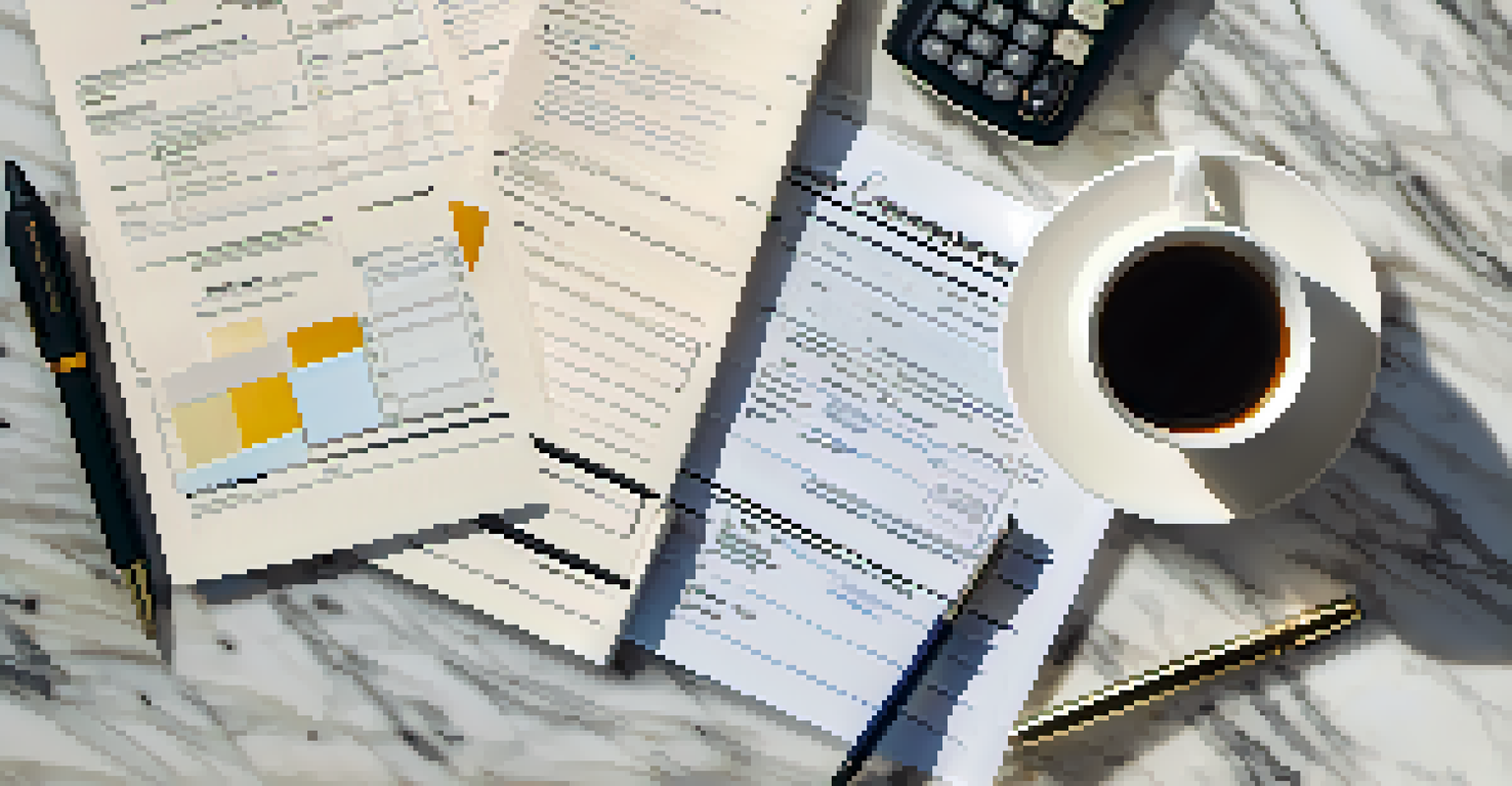Self-Employment Tax and Your Side Hustle: What to Know

What is Self-Employment Tax and Why It Matters?
Self-employment tax is a tax that independent workers pay to cover Social Security and Medicare contributions. If you earn money through a side hustle, understanding this tax is crucial to ensuring you meet your obligations. Essentially, it’s the IRS’s way of ensuring that self-employed individuals contribute to the social safety net.
The only thing certain in life is death and taxes.
The current self-employment tax rate is 15.3%, which includes 12.4% for Social Security and 2.9% for Medicare. Unlike traditional employees, who have their taxes withheld by their employers, self-employed individuals must calculate and pay this tax on their own. This can be a significant financial responsibility, especially if you're not prepared.
By knowing how self-employment tax works, you can avoid unpleasant surprises during tax season. Proper planning can also help you manage your finances better and keep more of your hard-earned money in your pocket. This understanding lays a solid foundation for your side hustle's financial health.
When Do You Need to Pay Self-Employment Tax?
Self-employment tax kicks in when your net earnings from self-employment reach $400 or more in a tax year. This means that if your side hustle is generating income, it’s time to start thinking about your tax obligations. Even if you’re working a full-time job, the income from your side gig is still taxable.

It's essential to track your earnings accurately throughout the year. Keeping a detailed record of your income and expenses can help you determine if you cross that $400 threshold. Remember, it’s not just about your earnings; expenses can be deducted to lower your taxable income.
Understand Self-Employment Tax
Self-employment tax is essential for independent workers, covering Social Security and Medicare contributions.
If you expect to owe more than $1,000 in taxes when you file your return, you may also need to make estimated tax payments throughout the year. This is a way to avoid a hefty bill when tax season rolls around. Staying proactive ensures you're not caught off guard and helps you manage your cash flow effectively.
Deductible Expenses: Keep More of Your Earnings
One of the perks of being self-employed is the ability to deduct certain business expenses. This means you can reduce your taxable income by accounting for costs related to your side hustle. Common deductible expenses include supplies, equipment, travel expenses, and even a portion of your home office if you work from home.
In this world, nothing is certain but death and taxes.
Keeping receipts and accurate records of these expenses is essential. You can use accounting software or spreadsheets to track everything efficiently. By doing so, you can ensure that you're maximizing your deductions and minimizing your taxable income.
Remember, the IRS requires that expenses be both ordinary and necessary for your business. This means that while you can deduct items essential for running your side hustle, personal expenses don’t qualify. Understanding what qualifies as a deductible expense can significantly impact your overall tax bill.
How to Calculate Your Self-Employment Tax
Calculating your self-employment tax can seem daunting, but it’s relatively straightforward. First, determine your net earnings by subtracting your business expenses from your total income. Once you have that figure, you can apply the self-employment tax rate of 15.3% to your net earnings to find out what you owe.
For example, if your net earnings are $10,000, your self-employment tax would be around $1,530. It’s important to remember that this tax is in addition to your regular income tax, so planning ahead is crucial. Using tax software or consulting a tax professional can help demystify this process.
Track Income and Expenses
Accurate tracking of earnings and deductible expenses is crucial to avoid unexpected tax liabilities.
Additionally, you can deduct half of your self-employment tax when calculating your adjusted gross income. This deduction helps reduce your overall taxable income, making it a bit easier to swallow your tax bill. Understanding these calculations can provide clarity and reduce anxiety come tax time.
Avoiding Common Self-Employment Tax Mistakes
Many self-employed individuals make common mistakes that can lead to unnecessary penalties. One of the biggest errors is underreporting income, which can trigger audits or fines from the IRS. Always report all your income, even if it’s just a small amount from a side gig; it’s better to be safe than sorry.
Another frequent mistake is not keeping accurate records of expenses. Without proper documentation, you may miss out on deductions that could significantly lower your tax bill. Make it a habit to organize your receipts and invoices throughout the year to streamline the process come tax season.
Lastly, failing to pay estimated taxes can lead to penalties and interest charges. If you anticipate owing more than $1,000 in taxes, it’s crucial to make quarterly payments. By being proactive and informed, you can avoid these pitfalls and keep your side hustle thriving.
The Importance of Setting Aside Money for Taxes
One of the most important lessons for anyone with a side hustle is to set aside money for taxes. Since self-employment tax isn’t withheld from your income, it can be easy to spend all your earnings without considering your tax obligations. A good rule of thumb is to set aside 25-30% of your income for taxes to ensure you’re financially prepared.
Creating a separate savings account for your tax money can also be beneficial. This way, when tax season arrives, you won’t be scrambling to come up with the funds you owe. You’ll feel a sense of relief knowing that your tax responsibilities are covered.
Set Aside Money for Taxes
Setting aside 25-30% of your income for taxes can alleviate financial stress during tax season.
Additionally, regularly reviewing your income and expenses can help you adjust your savings strategy as needed. If your side hustle grows, you may need to save more. By being proactive, you can turn tax time from a source of stress into a manageable part of your financial planning.
Resources for Navigating Self-Employment Tax
Navigating self-employment tax doesn’t have to be overwhelming, especially with the right resources at your fingertips. The IRS website offers a wealth of information, including publications and tools specifically designed for self-employed individuals. Familiarizing yourself with these resources can provide clarity on what you owe and how to file correctly.
Additionally, there are numerous accounting software options available that simplify tracking your income and expenses. Many of these tools even have features that can help you calculate your self-employment tax, making it easier to stay on top of your finances. Choosing the right software can save you time and reduce the likelihood of errors.

Finally, don’t hesitate to reach out to a tax professional if you have questions or concerns. They can provide personalized advice tailored to your specific situation. Whether you’re a seasoned entrepreneur or just starting out, having a solid support system can make all the difference in managing your self-employment tax responsibilities.